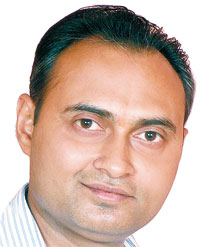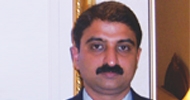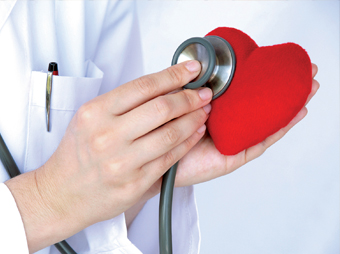
Rakesh Kumar Singh, Director (Healthcare-IT), Aarogya Infotech & Management Systems Pvt Ltd believes that a good HIS implementation creates a big impact, irrespective of hospital or HIS provider
The advncements in HIS can yet not be termed as stisfactory. Most of the implementations of HIS are still about billing, inventory, diagnostic reporting etc. The number of hospitals using systems like BI (Business Intelligence), EMR (Electronic Medical Record), CDSS (Computerised Decision Support System) or mobility are still very less. Today technology or techno-financial feasibility is no more an issue but hospitals need to look beyond vanilla solutions and demand more. It is happening in metros and at corporate hospitals, but the real advancement will be seen only when mid size hospitals in tier II/III cities decide to move up the ladder.

Hospital is a place where we find huge support for introduction and adoption of new technology. Every good doctor or hospital is willing to spend premium on new equipment or technology if they see their patient benefiting from it. Healthcare-IT needs should be judged by its value and not by its cost. I think the change in mindset of top management towards health IT is the biggest challenge.
The improvements in front office, inventory management, bill processing etc are visible at many hospitals. So efficiency has improved but for outcome (clinical) to improve EMR needs to be implemented. Today we have cost effective solutions for bed side computing which was a major factor preventing EMR adoption. Remote access, mobility, real time information sharing, all these are available and affordable. Hospital management and particularly doctors will show more faith in clinical usage of healthcare-IT. Cooperation of nursing staff will be a major contributor in ensuring success of outcomes through HIS.
The first challenge comes from the way healthcare provider industry works in India. There is no nationwide body, which guides or set rules for hospitals. There are no universal standards.

 There is no universal nomenclature to be used for services or disease. ICD-10 is there but it is optional. So for every implementation we spend lot of time and resources creating schedule of charges, inventory master list etc. Nowadays several discussions are taking place on inter-op (sharing of data between two different HIS).
There is no universal nomenclature to be used for services or disease. ICD-10 is there but it is optional. So for every implementation we spend lot of time and resources creating schedule of charges, inventory master list etc. Nowadays several discussions are taking place on inter-op (sharing of data between two different HIS).
The next challenge is the approach of hospital management towards HIS. The challenge is that it is still being looked as a computerisation issue. He believes, HIS is not about technology alone. It affects the complete work culture of the hospital. It affects the interaction between different departments. It changes the job profile and non-clinical staffs outlook towards work. Hospitals must take a holistic view in planning for HIS. Modular approach helps only during implementation. The real value of HIS can never be realised if it is implemented partially.
We need to educate people about its importance. HIS can continue to innovate and contribute towards improvement in patient care. These need not be big, revolutionary changes. There are plenty of good ideas floating around which can be implemented easily with the help of HIS. Patients who are cured and discharged from the hospital tend to skip their follow up visit if they feel fine. The HIS solution by us started sending an automated but personalised SMS two days prior to stipulated visit date. This was very successful and certainly helped in several cases. So HIS will continue to contribute towards better patient care, all it needs is some ingenuity and efforts from HIS solutions providers.//
Be a part of Elets Collaborative Initiatives. Join Us for Upcoming Events and explore business opportunities. Like us on Facebook , connect with us on LinkedIn and follow us on Twitter , Instagram.











